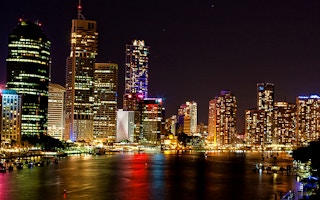Brisbane’s power-thirsty CBD is perfectly positioned for a green revolution industry, experts say, as climbing energy prices as an ageing building stock align to create a “perfect storm”.
But Queensland lacks the same private sector-local government financing models driving similar change in other major capital cities, and they say the time for change is now.
Currently, nearly 50 per cent of office towers in the city score poor to very poor on the commonwealth’s public National Australian Built Environment Rating System register, with some of the dirtiest buildings churning out over 3 million kilograms of CO2 per year.
The city also sucks more power from the grid than the entire Sunshine Coast with demand only expected to grow with the city’s swelling population of office-workers, visitors and residents.
Hence, Low Carbon Australia chief executive Meg McDonald is keen to see the kind of “environmental upgrade agreements” financing change in Sydney and Melbourne introduced to Queensland.
Such agreements work similarly to rates, whereby building owners pay a land levy to councils to pay off the original loan, with payments remaining with the property, regardless of ownership changes.
This added security makes it more likely the loan will attract a lower rate of interest.
In September, a 1970s-era 15-storey office block became the fourth building in Melbourne to use an EUA to cover the upfront costs of a green retrofit set to improve its NABERS energy-efficiency rating.
The Low Carbon Australia and the City of Melbourne agreement stumped up the $750,000 necessary to upgrade the building’s 42-year-old plant and equipment ahead of schedule, bringing about an immediate annual savings of $55,000 and an energy cost reduction of 30 per cent.
But Ms McDonald said such local government lead agreements were not yet possible in Queensland, and called for a change to the Local Government Act to enable EUAs in Brisbane.
“Both Sydney and Melbourne have state governments who’ve introduced environmental upgrade agreement financing,” she said.
“The councils there have also looked to greening the city as a way of attracting headquarters… New South Wales, Victoria, and South Australia have got [EUAs], so we think it’s an idea for its time [in Queensland].”
However, Ms McDonald said several green retrofits had been completed at buildings across Brisbane using finance secured directly by Low Carbon Australia through its network of lenders.
NAB, Macquarie Leasing and FlexiGroup are among the firms helping finance projects embarked upon by the independent company. Low Carbon Australia was initially established as the Australian Carbon Trust in 2010 by the Australian Government with about $100 million in funding.
Ms McDonald said the first green retrofit financed in Brisbane was a 1980s Brisbane office block at 26 Wharf Street in Brisbane, then owned by the Harvest Property Group and recently sold at a profit.
Harvest director Chris Slack said the upgrade reduced the building’s energy consumption by more than 40 per cent and took the building’s NABERS rating from zero to a targeted four stars, contributing to a $4.3 million gain on the $7.95 million acquisition price in 2010.
The $1.5 million upgrade of O’Connell’s OBM House included new building air conditioning and the replacement of the base building metering and the building management system.
“It showed us it’s profitable to be green,” Mr Slack said.
“Essentially, we bought a dodgy old building and we started with the view of being mercenary, but we soon realised it wasn’t hard to adjust our paradigm and achieve a green outcome that met our profit objectives.
“Going green was all fluffy before but there’s an obvious benefit now – especially for a city like Brisbane were 72 per cent of the building stock was built prior to 1990.”










